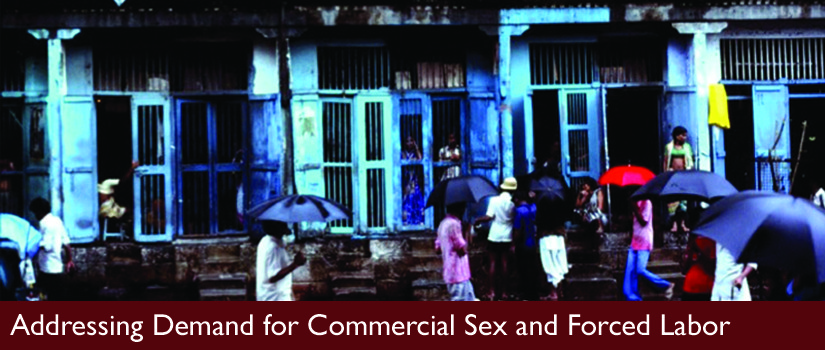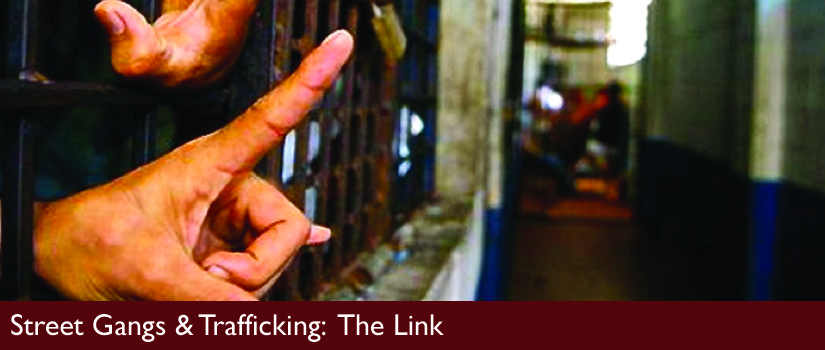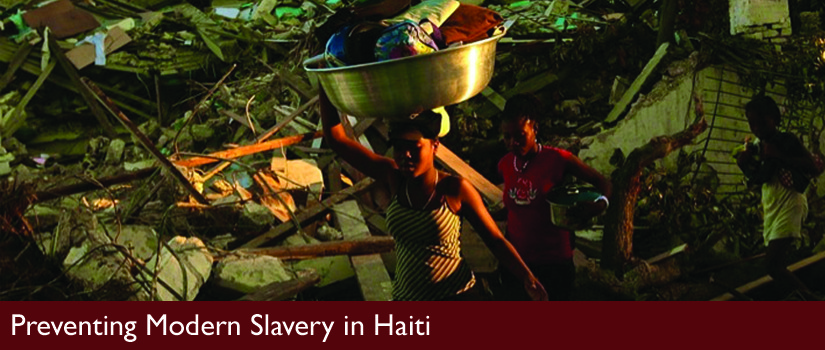The New Prostitutes?
July 8, 2013Comments are closed.
Dear Global Centurion Foundation friends, we wanted to highlight a Letter to the Editor from Melissa Farley, Ph.D., Executive Director, Prostitution Research & Education, to the New York Times, regarding Robert Kolker’s article “The New Prostitutes”. Please share her thoughtful reply to your circles.
_______________________
To the Editor, New York Times,
July 2, 2013
There are no “new prostitutes” as Robert Kolker puts it.Instead, there are new techniques to sell women for sex. There arenew technologies that facilitate trafficking for prostitution.Today 80-90% of prostitution is advertised online, but prostitution isthe same oppression as ever. Almost all women want to get out ofprostitution which is the business of sexual exploitation.Prostitution feeds off of women’s lack of survival alternatives.Women want out because of the sexual harassment, the verbal abuse,the rapes, and because as one woman prostituting legally in Nevada said,”no one really wants to be sold.”
How about investigating the cutting edge laws that criminalize buying aperson for sex, as in Sweden. This has resulted in the lowest rateof trafficking in Europe. Sex buyers, still largely sociallyinvisible, are becoming legally targeted by communities that recognizewhat some of us see: buying sex is a predatory activity predicatedon inequality between men and women.
Melissa Farley, Ph.D., Executive Director
Prostitution Research & Education
__________________________
JUNE 29, 2013,3:11 PM
The New Prostitutes
The New York Times
ByROBERT KOLKERTake the Long Hill Road exit off I-95 in eastern Connecticut and curl south toward the waterfront city of Groton and youll find each of the places that briefly employed Maureen Brainard-Barnes. There is the TJ Maxx and the AutoZone and the Stop and Shop. And the Chesters chicken counter, where she made the potato wedges. And the shopping center with the Groton Cinema 6, where she picked up discarded snacks from the carpet in exchange for free admission and a bag of popcorn.
In 2005, Ms. Brainard-Barnes was a 22-year-old single mother who had difficulty holding down a steady job. She never could afford her own place, staying with her sister for long stretches and occasionally with a boyfriend. Modeling, she thought, could lead to a music career. As soon as she enrolled on a site calledModelMayhem.com, she received dozens of e-mails from places that purported to be modeling agencies but that, after a few clicks, turned out to mean nude modeling and sometimes working as an escort. She wasnt thrown by seeing this. What did surprise her was the money.
Within a few months, Ms. Brainard-Barnes was making up to $2,000 a day on trips to New York City. She posted ads on Craigslist and worked out of a hotel room in Midtown for short stretches and then returned home to care for her daughter. After so many years of depending on others, she could leave her responsibilities behind and become another person for a while and she could earn enough money to fulfill those same responsibilities. Online, she could be her own boss and not share what she made with anyone not a pimp, not an escort service, not a boyfriend.
In 2010, Maureen Brainard-Barness body was one of four uncovered close by one another in the sand dunes of Gilgo Beach, Long Island, wrapped in burlap. Three years later, the Long Island serial killer case remains unsolved, even as six more sets of remains have been discovered nearby along Ocean Parkway and farther east. The first four bodies were identified as women in their 20s just like another woman, Shannan Gilbert, who had disappeared three miles from where the four bodies in burlap were found. These five women clearly had much in common. Maureen Brainard-Barnes, Melissa Barthelemy, Shannan Gilbert, Megan Waterman and Amber Lynn Costello all grew up in struggling towns a long distance from Long Island. And they all were escorts who discovered an easy entree into prostitution online.
It had seemed enough, at first, for some to say that the victims were all prostitutes, practically interchangeable lost souls who were gone, in a sense, long before they actually disappeared. That is a story our culture tells about people like them, a conventional way of thinking about how young girls fall into a life of prostitution: unstable family lives, addiction, neglect.
But in the two years Ive spent learning about the lives of all five women, I have found that they all defied expectations. They were not human-trafficking victims in the classic sense. They stayed close to their families. They all came to New York to take advantage of a growing black market an underground economy that offered them life-changing money, and with a remarkably low barrier to entry. The real temptation wasnt drugs or alcohol, but the promise of social mobility.
The Web has been the great disrupter of any number of industries, transforming the way people shop for everything, and commercial sex has been no exception. Posting ads online, escorts find clients without ever having to leave home or walk the streets. The method is easier, seductively so, almost like an A.T.M. post an ad, and your phone rings seconds later. That ease clearly doesnt mitigate the risk of meeting strangers, though it might seem like it to some escorts.
The great transforming feature of the Internet is its anonymity. We all have learned that a person can do practically anything online without even their closest loved ones knowing, from commenting on Yelp or Gawker to selling stolen goods or viewing porn videos. This is as true for the escorts as it was for the clients, who have turned sites like TheEroticReview.com into a sort of Yelp for steady customers of commercial sex. No one has to go to a bad part of town to look for what he wants.
While no one has yet measured exactly how significantly the Internet has increased the number of working escorts, its already clear that many Internet sex workers would never seriously consider working on the street.Scott Cunningham, an economist at Baylor University, conducted a survey of 700 sex workers in the United States and Canada. The Internet is augmenting the sex market by bringing in women who would not have entered the sex market without the Internet, he says. In one month chosen at random by Mr. Cunningham May 2009 an average of 1,690 sex-worker ads were posted online every day in the New York City area alone.
All it took to persuade many of these women to enter the field, Mr. Cunningham theorizes, was a little financial pressure, or economic shocks. The explanations for entering escort work, he says, are often surrounding loss of income or increase of expenses they need to cover. A woman told me she was getting a divorce, she had a child, her husband was not going to provide child support. She already had a 40-hour-a-week job. And so her options were, she could get another job and work about 60 hours a week. Or she could do this and see her child more and have more money.
The women of Gilgo Beach all came from parts of the country hit hard by the recession like Buffalo, N.Y., and Portland, Me. places where even if you did well in school, there seemed to be not much of a chance of finding a higher-than-minimum-wage job, much less one with health benefits. Some worked for escort services or walked the streets before turning to the Internet; others got their start online. Using Web sites like Craigslist and Backpage, they all made money that transformed their lives.
Shannan Gilbert worked for a high-end escort service in Jersey City, where the minimum rate was $400 or $500 an hour. But she took home only a third of that. When she switched to Craigslist, she made $1,000 many nights, enough to pay a months rent on her apartment. Melissa Barthelemy abandoned her pimp to be her own boss online, charging $100 for 15 minutes, $150 for a half-hour, $250 for an hour and $1,000 for an overnight stay. She made enough money to come home to Buffalo at Christmastime and take her sister and mother to a spa for massages. You deserve to be pampered, she told them.
Megan Waterman took three- or four-day working trips to Long Island from her home in Portland and made $1,500 on a busy night. And Amber Lynn Costello, a North Carolina native who lived briefly in West Babylon, Long Island, once raised $3,800 in just three days to bail out her boyfriend from jail all, her friends said, from Craigslist.
In the beginning, you make the money, and youre making it without the drugs, said her sister Kim Overstreet, who has also worked as an escort. And then you get addicted to the money.
The women werent the only ones to have profited. In 2010, Craigslist earned a reported $44.4 million from Adult Services ads, or about a third of the companys total revenue (the site had started charging $5 to $10 per posting two years earlier). For a time, some believed that Craigslist and its competitors were doing well by doing good. In 2006, a research team from Princeton and Columbia said that this new wave of prostitutes had a professional and careerist orientation.
Three years later, Mr. Cunningham noted in one study that the Web was drawing different sorts of people into prostitution they were better educated and they were thinner. In 2011, Jennifer Hafer, a researcher at the University of Arkansas, said people embraced online prostitution for many of the same reasons that people enter the conventional job market money, stability, autonomy and even job satisfaction. The Internet, said to be the solution to so many problems, was expected to legitimize the entire field of prostitution, elevate the underclass and make pimps a thing of the past.
OBVIOUSLY, that wasnt how things turned out for the women of Gilgo Beach. Maureen Brainard-Barnes disappeared in July 2007, last heard from near Penn Station. Melissa Barthelemy was said to be heading by herself to Long Island for an overnight appointment in July 2009. Shannan Gilbert vanished in the middle of a call in Oak Beach on May 1, 2010, in circumstances that still have not been fully explained. A month later, Megan Waterman disappeared after leaving a hotel room in Hauppauge. And in September 2010, Amber Lynn Costello, who didnt like to leave her house for work, had agreed to an overnight date for $1,500. Many other online escorts have reported incidents of violence. Nearly half of the New York City online escorts surveyed by the Urban Justice CentersSex Workers Projectin 2005 said they had been forced by a client to do something they did not want to do, and almost as many said they had been threatened or beaten. (In his research, Mr. Cunningham has found that the escorts who needed the money the most were the ones who lacked the resources and time to properly vet their clients.)
Politicians and law enforcement officials took notice of the problem in 2009, the same year Philip Haynes Markoff was arrested and charged with the murder of a masseuse he met on Craigslist. That same year, the sheriff of Cook County, Illinois, sued Craigslist, calling the site the single largest source of prostitution in the nation.
Of course, if capitalism teaches us anything, its that a demand-heavy market will find a way to thrive no matter what the obstacles. The pressure forced Craigslist to shut down its Adult Services category on Sept. 3, 2010 as it happens, the day after Amber Lynn Costello went missing. Right away, the main competitor to Craigslist, Backpage, experienced an explosion in new escort postings. If community pressure or the threat of litigation sinks Backpage, a dozen more sites like it stand ready to pick up the traffic (and some escorts have never left Craigslist, posting surreptitiously in other categories).
The market doesnt care if prostitution is right or wrong, empowering or exploitative. The demand sustains human trafficking and under-age escorts engaging in survival sex. Just last month, the social-service organization Covenant House in Midtown Manhattan released the findings of asurveyit conducted with Fordham University, which found that nearly half of the under-age prostitutes seeking help said they did it because they did not have a place to live.
Escorts face danger not because of the Internet but because theyre still forced to work underground. In a different world, technology could be harnessed to reduce the dangers of prostitution. The University of Colorado law professor Scott Peppet has floated the possibility of a technology-enabled sex market where escorts and clients are all pre-vetted and predators are screened out. The law, however, is hostile to such innovation, Professor Peppet writes. It currently criminalizes not just prostitution itself, but activities including technologies that advance or facilitate sex markets. As it stands, escorts online remain invisible, where they are vulnerable to predators.
At the top of the pay scale, technology is delivering on its promise. Workers can increase their hours and their output from home and even work second jobs with more ease than ever. But toward the bottom, anxiety lingers, and the Web enables some people to take risks they never would have imagined. In this way, the women of Gilgo Beach still have something to teach us. The Internet might have made pimps less necessary, but todays escorts are as marginalized as ever, and every bit as vulnerable. The police rarely help them when they are at risk, and they rarely take their disappearances seriously. As far as the authorities are concerned, their profession still seals their fate.
Robert Kolkeris a contributing editor to New York magazine and the author of the forthcoming book, Lost Girls: An Unsolved American Mystery.





